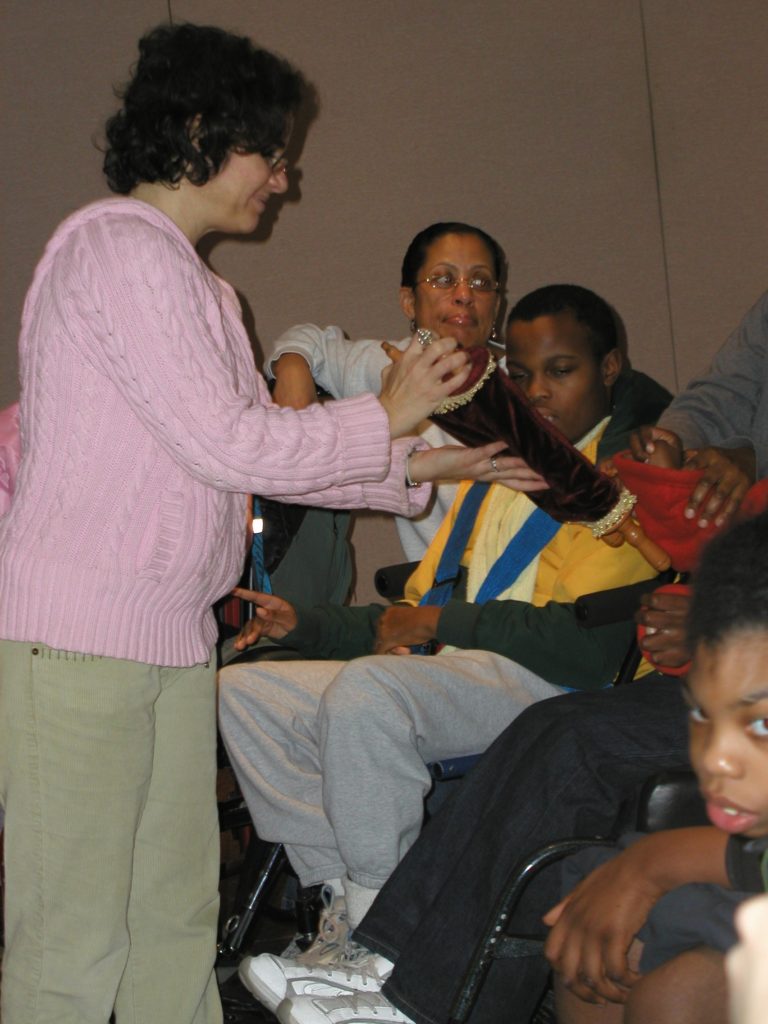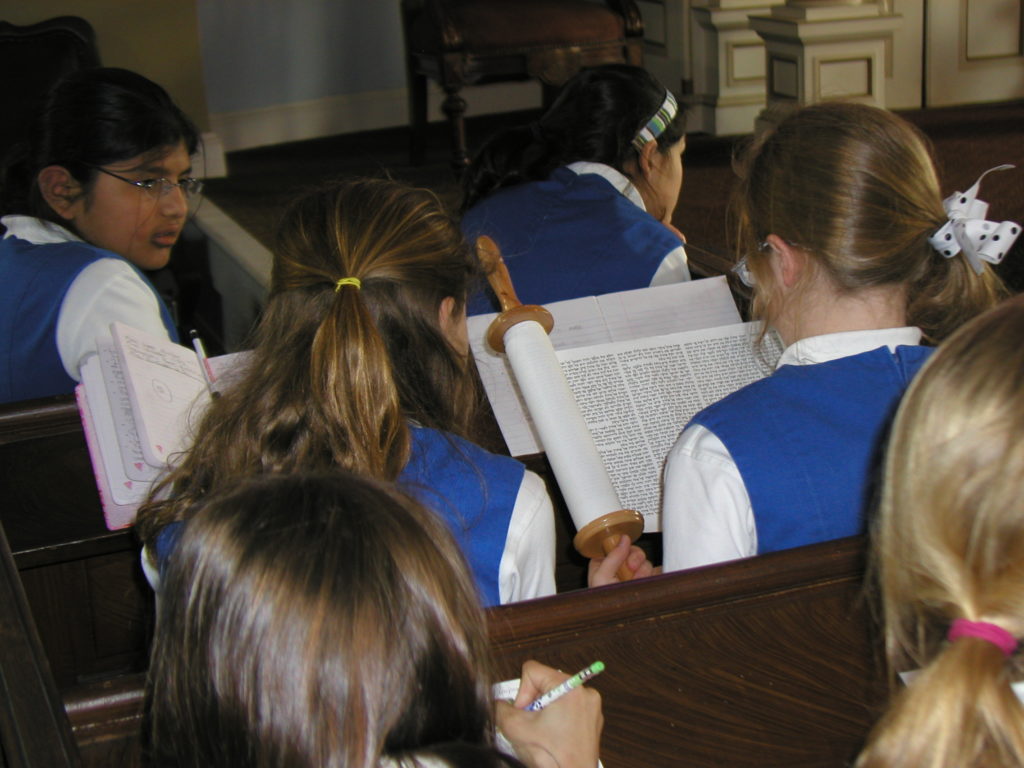The 613th Commandment
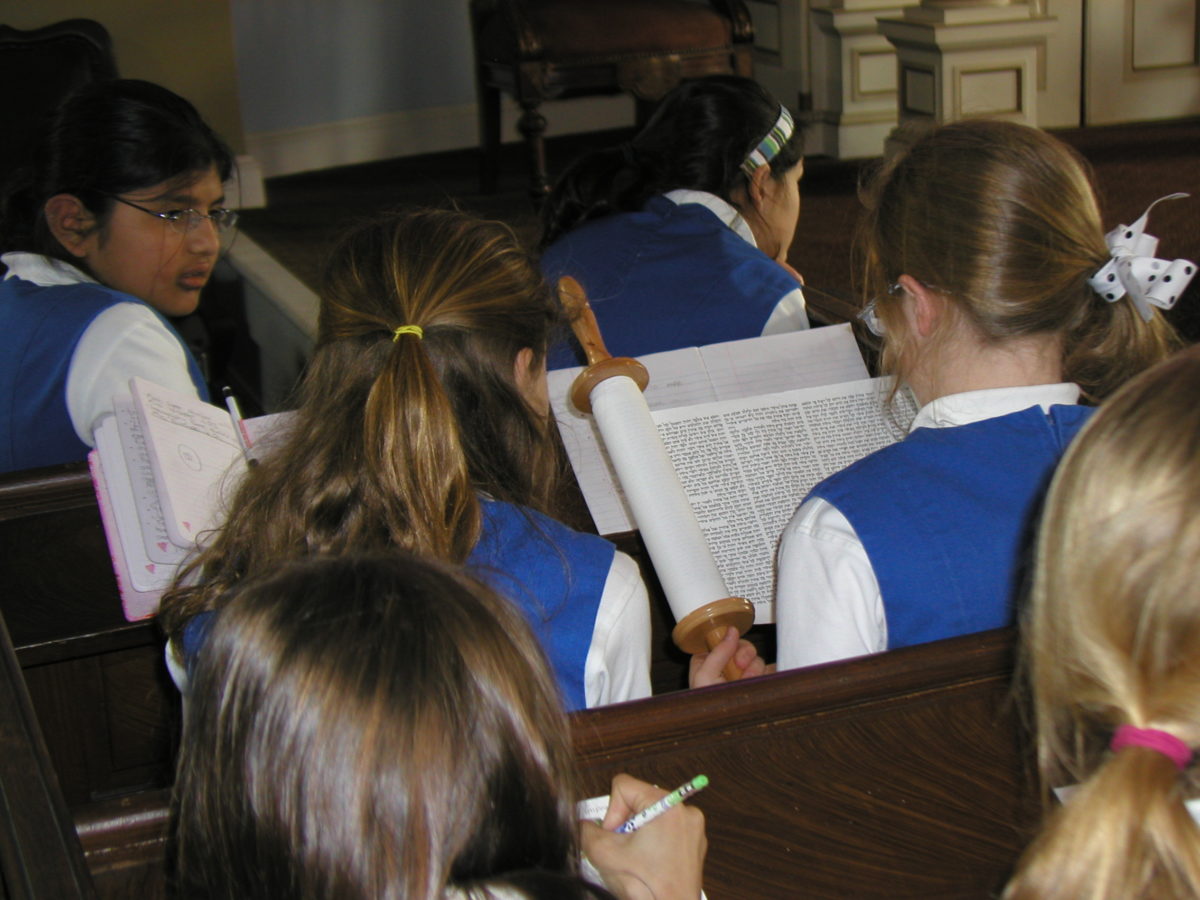
One of the most popular features of our Introduction to Judaism educational program is when our docents take off the cover of our small model Torah in the Lloyd Street Synagogue and unroll it so students can examine it. There’s usually a collective sound of “Ooohh” and “Ahhhh”, as students jostle for position so that they can see the Torah and touch it (because it is not an authentic Torah scroll, kids can handle it). As they look at it closely, they wonder out loud, “How do you read that? It looks like Chinese to me?” and before the docent starts a response, other kids have chimed in with questions, “How is it made?” “How long is it if you completely unroll it?” “Can you read to us from it?”
Explaining the significance of the Torah is one of the highlights of the program, as we give non-Jewish students an overview of Jewish history, traditions, and culture. We talk about how the Torah is written by hand by a scribe and the importance of writing each and every letter exactly as they have been written for thousand of years as a means of preserving the integrity of this sacred text. (Check out http:///www.torahtots.com/torah/sefertorah.htm to learn more about the writing of a Torah)
Having facilitated many Introduction to Judaism programs over the years, and talked about the importance of the Torah to hundreds of students, I have never actually had the opportunity to see an authentic Torah scroll up close, much less had the chance to touch its parchment. I was, therefore, thrilled to receive an invitation to fulfill the last commandment of the Torah, participating in the actual writing of a Torah. The synagogue where I belong, Chizuk Amuno Congregation, has recently commissioned the writing of a new Torah scroll and has invited congregants to participate in this act.
When we arrived at the synagogue, we were ushered into the chapel, where we met Rabbi Schulman and Rabbi Wechsler and washed our hands while reciting a special blessing. We wondered aloud about which Hebrew letter we would receive as ours to inscribe. Would it be a Mem (for Michal – my older daughter’s Hebrew name) or a Yud (for Yael, my younger daughter’s Hebrew name) or perhaps an Aleph (the first letter of the alphabet) ?
(To learn more about the letters of the Hebrew alphabet, check out http:///www.jewfaq.org/alephbet.htm)
We waited anxiously for our turn to meet Rabbi Moshe Druin, the sopher (scribe) who brought us over to the prepared parchment (made from deer skin, a kosher animal) upon which he was working. We got to touch the parchment which was incredible soft and smooth and looked at the many different letters that had already been completed. While technically we were invited to help write the Torah, all of the letters were outlined by Rabbi Druin and congregants were invited to hold onto the feather plume of the ink pen while he filled it in. I breathed a sigh of relief not having to worry about messing up the entire scroll by inking outside the outlines.
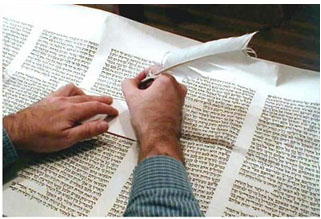
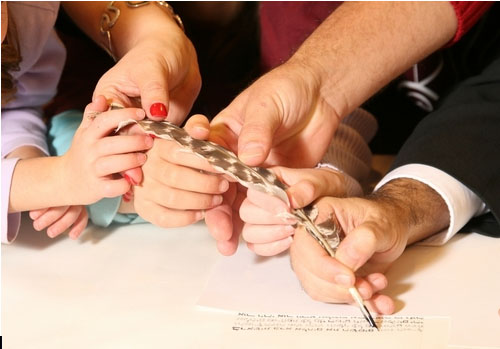

Not just any Vav, but a Vav that appeared at the top of a column of text. We learned from Rabbi Druin that each column in the Torah begins with a Vav (which means “and” when placed in front of a word) as a way of connecting the beginning of the column to all that comes before and all that comes after. Furthermore, we learned that this function of the Vav has the simultaneous function of emphasizing the importance of the word it’s modifying while also reminding the word that its significance is only in relation to the words that come before and after. In essence the word is part of a larger text that only makes sense when you read the whole story. Certainly a lesson we can all take to heart about our relationship to family members and community! To make our letter even more special, we learned that our Vav started the last line of the book of Genesis – not too shabby!
(To learn more about the significance of individual Hebrew letters, go to http:///www.inner.org/hebleter/default.htm)
I look forward to sharing my newfound knowledge with my next group of students!
A blog post by Education Director Deborah Cardin.

